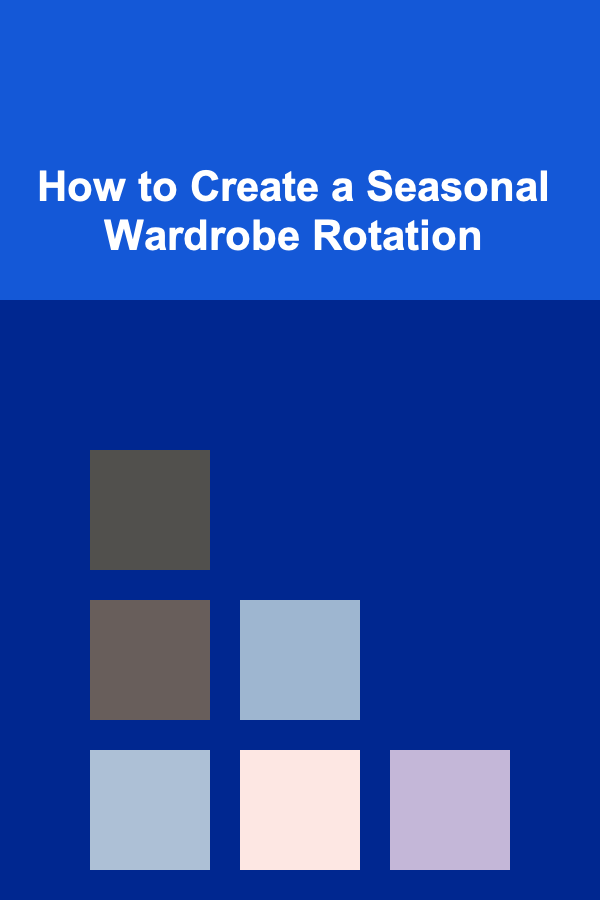
How to Expand Your Craft Business with Wholesale Orders
ebook include PDF & Audio bundle (Micro Guide)
$12.99$9.99
Limited Time Offer! Order within the next:

Expanding your craft business into the wholesale market can be an exciting and lucrative venture. Wholesale orders provide an opportunity to scale your business, increase revenue, and reach a broader audience. However, successfully transitioning from small-scale direct-to-consumer sales to handling larger wholesale orders requires strategic planning, solid organization, and effective marketing. This actionable guide will walk you through the essential steps to expand your craft business with wholesale orders.
Understand the Wholesale Model
Before diving into wholesale orders, it's essential to understand how wholesale works and how it differs from direct-to-consumer sales. In a wholesale model, businesses (wholesalers) sell products in bulk to other businesses (retailers) at a discounted price. These retailers then sell the products to their customers at a higher retail price, making a profit.
The key difference between wholesale and retail is the price point. Wholesale prices are typically much lower than retail prices, but you will sell in larger quantities. Additionally, the customer base changes from individual buyers to business buyers who are reselling your products.
Key Points to Consider:
- Lower Profit Margins: While wholesale orders bring in large quantities, the profit margin per item is generally lower compared to retail.
- Bulk Orders: Wholesale customers expect to place large orders, which can be a challenge if you're used to small batches.
- Customer Relationships: Unlike retail customers, wholesale buyers are businesses that may have specific demands or requirements for your products.
Prepare Your Products for Wholesale
To successfully attract and fulfill wholesale orders, your products must meet certain criteria. This includes not only the quality of your products but also ensuring that they are well-prepared for large-scale distribution.
2.1. Standardize Your Products
For wholesale buyers, consistency and reliability are critical. This means your products should be produced with the same level of quality every time, with no variation between units. Buyers want to know exactly what they are purchasing, especially when they are ordering in bulk.
- Develop Clear Specifications: Establish clear specifications for your products, including size, color, weight, and materials.
- Packaging: Wholesale buyers often expect products to be well-packaged for easy display and sale. If you're handcrafting items, ensure your packaging reflects the professionalism needed for retail stores.
- Product Variations: If you offer multiple variations (e.g., different sizes, colors, or designs), ensure that they are consistently available and well-organized for bulk orders.
2.2. Build Inventory Management Systems
Wholesale orders often involve large volumes, so it's crucial to have a robust inventory management system in place. This will help you track stock levels, manage production schedules, and ensure that you can meet wholesale demand.
- Inventory Tracking Software: Invest in software or tools that can help you track your inventory levels and make it easier to fulfill large orders.
- Production Capacity: Understand your production capacity and whether you need to increase it to meet wholesale demands. You may need to hire additional staff or outsource some production to scale up.
2.3. Pricing Strategy
Your pricing structure should reflect the discounts typically given to wholesale buyers while still leaving room for profitability. While wholesale prices are significantly lower than retail prices, they should cover your production costs and leave room for profit.
- Wholesale Price Calculation: A common rule of thumb for wholesale pricing is to sell products to retailers at about 50% of the retail price. This allows the retailer to mark up the price for resale while you maintain profitability.
- Volume Discounts: Consider offering price breaks for larger orders, which can encourage larger bulk purchases.
Identify and Reach Out to Potential Wholesale Buyers
Finding and attracting wholesale buyers is a critical part of expanding your business. Here are some strategies to help you identify potential buyers:
3.1. Target Retailers in Your Niche
Start by identifying retailers who sell products similar to yours or in related industries. Look for stores that align with your brand and would benefit from selling your products.
- Research Local Retailers: Start by researching local stores in your area that may be interested in carrying your crafts. Visit their websites, check their social media, or even walk in and talk to the owners.
- Online Marketplaces: Explore online marketplaces like Etsy Wholesale, Faire, and Tundra, where you can list your products for wholesale buyers to discover.
- Industry Events: Attend craft fairs, trade shows, or industry events to meet potential buyers in person. These events can be excellent networking opportunities and a way to showcase your products.
3.2. Build a Wholesale Catalog or Line Sheet
Once you've identified potential buyers, you need to create an effective way to showcase your products and provide pricing information. A wholesale catalog or line sheet is an essential marketing tool for attracting wholesale buyers.
- Professional Photos: Include high-quality images of your products. Ensure they are well-lit, clear, and accurately represent the products.
- Product Descriptions: Include detailed descriptions for each item, highlighting unique features, materials, and benefits.
- Pricing and Order Terms: Clearly list your wholesale prices, minimum order quantities, and any volume discounts available. You should also include terms for payment, delivery, and returns.
3.3. Reach Out to Potential Buyers
Once you have your catalog or line sheet ready, it's time to start reaching out to potential buyers. This is where your sales and marketing skills come into play.
- Cold Emails: Craft a professional, concise email introducing your brand, showcasing your products, and providing a link to your wholesale catalog. Make sure your email is personalized and tailored to the retailer you're contacting.
- Phone Calls: A phone call can sometimes be more effective than an email. Try calling the retail stores or buyers you're targeting to introduce yourself and discuss the possibility of a wholesale partnership.
- Follow-Up: After your initial contact, don't be afraid to follow up with a polite email or phone call to check in.
Establish Wholesale Order Terms
Once you start securing wholesale orders, you need to establish clear terms for your orders. This includes payment terms, delivery times, and any other expectations you may have.
4.1. Payment Terms
Setting clear payment terms is essential for maintaining cash flow and avoiding any misunderstandings.
- Upfront Payment: Many small craft businesses require upfront payment for wholesale orders, especially if they are new to the wholesale market.
- Net Payment Terms: Larger businesses may expect net payment terms (e.g., net 30 or net 60), which means they have 30 or 60 days to pay the invoice after receiving the goods.
- Deposits: Some businesses prefer to take a deposit before starting production for large orders.
4.2. Shipping and Delivery
Ensure you have a reliable and cost-effective shipping process in place. Wholesale buyers expect timely delivery of their orders, so it's important to establish realistic delivery times and communicate them clearly.
- Shipping Costs: Consider offering free shipping for large orders or including shipping costs in your pricing.
- Packaging: Wholesale buyers often require bulk packaging, so ensure your products are packaged in a way that facilitates large shipments.
Focus on Customer Service and Relationships
Building long-term relationships with wholesale buyers is essential for sustaining growth. Providing excellent customer service and maintaining communication with your wholesale clients can lead to repeat business and positive word-of-mouth.
5.1. Build Strong Relationships
- Regular Check-Ins: Regularly check in with your wholesale clients to make sure they are happy with your products and services.
- Offer Support: Be available to assist with any issues, whether it's with order fulfillment, shipping, or product details.
5.2. Respond to Feedback
Wholesale buyers may provide feedback on your products, which can be invaluable for improving your offerings. Be open to constructive criticism and make adjustments where necessary to keep your buyers satisfied.
Conclusion
Expanding your craft business with wholesale orders can significantly boost your revenue and grow your brand. By understanding the wholesale model, preparing your products, reaching out to potential buyers, and building strong customer relationships, you can create a solid foundation for success. While it may require more effort and resources than selling directly to consumers, the rewards of scaling your craft business through wholesale orders are well worth it. By focusing on quality, professionalism, and excellent customer service, you can successfully tap into the wholesale market and grow your business to new heights.
Reading More From Our Other Websites
- [Home Pet Care 101] How to Clean a Cat's Litter Box: Maintaining Hygiene for a Happy Cat
- [Home Cleaning 101] How to Safely Clean Wood Furniture Using Natural Household Ingredients
- [Home Storage Solution 101] How to Use Closet Organizers to Maximize Space in Tight Spaces
- [Home Budget Decorating 101] How to Embrace Budget Boho Decor for a Relaxed Vibe
- [Personal Investment 101] Turn Your Deep Learning Models into Profitable Products
- [Soap Making Tip 101] Rainbow in the Bath: Mastering Color Blends for Homemade Soap
- [Home Soundproofing 101] How to Seal Gaps and Cracks to Achieve Better Soundproofing
- [Organization Tip 101] The Best Wall Painting Techniques for a Smooth Finish
- [Organization Tip 101] How to Organize Seasonal Ingredients in Your Recipe Books
- [Skydiving Tip 101] How to Organize a Charity Skydiving Event That Raises Over $10,000 in One Day

Best Organization Tools for Inventory Management
Read More
Building Blocks of Performance Marketing: From Strategy to Execution
Read More
How to Create a Seasonal Wardrobe Rotation
Read More
How to Repair and Maintain Your Home's Fencing
Read More
Product Ownership Roadmap: From Vision to Reality, A Practical Approach
Read More
10 Tips for Eco-Friendly Gift Wrapping: A Checklist Guide
Read MoreOther Products

Best Organization Tools for Inventory Management
Read More
Building Blocks of Performance Marketing: From Strategy to Execution
Read More
How to Create a Seasonal Wardrobe Rotation
Read More
How to Repair and Maintain Your Home's Fencing
Read More
Product Ownership Roadmap: From Vision to Reality, A Practical Approach
Read More